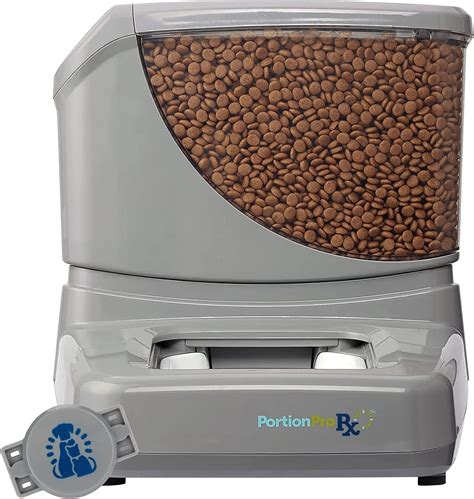Introduction
RFID pet feeders have gained immense popularity as convenient and reliable solutions for pet owners seeking to manage their pets’ feeding schedules. However, like any technological device, these feeders are not immune to occasional issues. This article delves into common problems associated with RFID pet feeders, providing effective solutions and exploring advanced tracking capabilities that enhance pet care in 2025.

RFID Pet Feeder Problems and Solutions
Problem: Feeder Doesn’t Dispense Food
- Solution: Check if the feeder is powered on and the food tray is filled.
- Ensure the RFID tags are properly attached to the pet’s collar.
- Reset the feeder by unplugging it for 10 seconds and reconnecting it.
Problem: Feeder Dispenses Food at Unexpected Times
- Solution: Verify the feeder’s settings and ensure the correct feeding schedule is programmed.
- Check for any obstructions in the food dispensing mechanism.
- Contact the manufacturer if the issue persists.
Problem: Pet Cannot Access Food
- Solution: Examine the size and shape of the RFID tag to ensure it is suitable for the pet’s size.
- Check if the tag is damaged or malfunctioning.
- Adjust the feeder’s sensor range to accommodate the pet’s approach.
Advanced RFID Tracking Capabilities in 2025
Real-Time Food Consumption Monitoring
RFID pet feeders integrated with advanced tracking capabilities will allow pet owners to monitor their pet’s food consumption in real-time through smartphone applications. This data provides valuable insights into the pet’s eating habits and helps identify potential health issues.
Daily Calorie Intake Tracking
In 2025, RFID pet feeders will offer personalized calorie tracking features. By calculating the pet’s daily energy needs based on its breed, weight, and activity level, the feeder can automatically adjust food portions, ensuring optimal nutrition.
Automated Replenishment Alerts
When the food in the feeder runs low, integrated RFID technology will automatically send notifications to pet owners, alerting them to replenish the supply. This eliminates the risk of empty feeders and ensures pets have access to food at all times.
Comparison of RFID Pet Feeders vs. Traditional Feeders
| Feature | RFID Pet Feeders | Traditional Feeders |
|---|---|---|
| Convenience | Automatic and programmable | Manual and inconsistent |
| Portion Control | Accurate and consistent | Limited and subjective |
| Security | RFID tag authentication | Susceptible to unauthorized access |
| Health Monitoring | Track food consumption and patterns | No health-related data collection |
| Cost | Higher initial investment | Lower initial cost |
Effective Strategies for Troubleshooting RFID Pet Feeders
1. Read the User Manual Thoroughly
Reviewing the user manual provides detailed instructions and troubleshooting tips specific to the model of feeder.
2. Contact Customer Support
If troubleshooting methods fail, reaching out to the manufacturer’s customer support can provide personalized assistance and potential solutions.
3. Check for Updates
Regular software updates may address known issues and improve the feeder’s functionality.
4. Clean and Maintain the Feeder
Regular cleaning of the feeder and RFID tags ensures optimal performance and prevents malfunctioning.
Tips and Tricks for Optimal Use
1. Use High-Quality RFID Tags
Investing in high-quality RFID tags ensures reliable identification and prevents false readings.
2. Position the Feeder Strategically
Placing the feeder in a quiet spot away from distractions creates a positive feeding environment for pets.
3. Monitor Food Levels Regularly
Checking the food level in the feeder periodically ensures the pet has sufficient food and minimizes the risk of empty feeders.
4. Consider a Dual-Feeder Setup
Using two feeders for pets with different dietary needs or feeding schedules provides flexibility and reduces the likelihood of food shortages.
FAQs
1. What is the shelf life of RFID tags used in pet feeders?
RFID tags typically have a shelf life of 5-7 years.
2. Can RFID pet feeders be used with multiple pets?
Yes, some RFID pet feeders allow the use of multiple RFID tags to accommodate multiple pets.
3. How often should I clean the RFID pet feeder?
Regular cleaning is recommended every 2-4 weeks to prevent food residue and dust accumulation.
4. Are RFID pet feeders safe for all pets?
RFID tags are generally safe for all pets, but it is advisable to consult with a veterinarian if you have any concerns.
Current Status and Future Trends
The RFID pet feeder market is projected to reach over USD 1.2 billion by 2025, with increasing demand for personalized pet care and convenience. Advancements in RFID technology and the integration of AI capabilities will further enhance the tracking and monitoring capabilities of RFID pet feeders.
Future trends include:
- Integration with Smart Home Systems: RFID pet feeders will seamlessly connect with smart home devices, allowing owners to control feeding remotely and monitor their pets’ well-being in real-time.
- AI-Powered Food Recommendations: AI algorithms will analyze food consumption patterns and make personalized recommendations based on the pet’s age, breed, and health status.
- Advanced Security Features: Biometric recognition and blockchain technology will be incorporated into RFID pet feeders to prevent unauthorized access and ensure pet safety.
Conclusion
RFID pet feeders play a crucial role in modern pet care, providing convenience, portion control, and enhanced monitoring capabilities. By understanding common problems and effective solutions, pet owners can ensure optimal performance of RFID pet feeders. As technology advances, RFID pet feeders will continue to evolve, offering even more advanced features to enhance the health and well-being of our beloved companions.





















